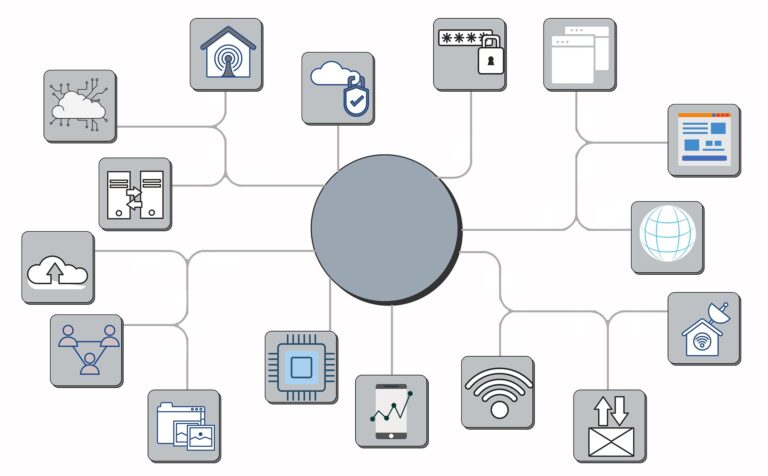In the ever-evolving landscape of customer engagement, chatbots (a short for chatterbots) have emerged as powerful tools for businesses to interact with their customers. As we delve into 2024, the potential of chatbots to enhance customer engagement has never been more significant. This article explores the multifaceted ways in which chatbots are transforming customer interactions and driving business success.
Evolution of Chatbots
Table of Contents
Chatterbots have evolved significantly from their origins as scripted response systems. Initially, they were basic tools designed to provide predefined answers to specific questions. However, with advancements in artificial intelligence (AI) and natural language processing (NLP), chatbots have become sophisticated conversational agents.
The evolution of chatterbots can be traced through several key stages. First, they transitioned from rule-based systems to AI-powered models capable of understanding context, sentiment, and intent. This allowed chatbots to provide more personalized and relevant responses to users.
Next, chatterbots began integrating with other technologies such as machine learning and data analytics. This enabled them to learn from user interactions, improve their conversational abilities over time, and provide more accurate and valuable assistance.
In recent years, chatterbots have evolved further with the advent of voice recognition, enabling users to engage with them through voice commands. Additionally, they are now integrated into various platforms and channels, offering omnichannel support and enhancing their accessibility and usability for users across different touchpoints.
How Chatbots Transform Customer Interactions and Drive Business Success
Enhanced Customer Experience
One of the key benefits of a chatterbot is its ability to provide real-time support and assistance to customers. Whether it’s answering product queries, troubleshooting issues, or guiding users through a purchase process, chatbots offer a seamless and efficient experience. This leads to higher customer satisfaction and loyalty.
- Omnichannel Integration
In 2024, chatbots are no longer limited to a single platform. They are seamlessly integrated across various channels such as websites, social media platforms, messaging apps, and even voice assistants. This omnichannel presence ensures that customers can interact with businesses wherever they are, enhancing accessibility and convenience.
Personalization at Scale
AI-powered chatterbots analyze customer data in real time to deliver personalized recommendations, offers, and content. By understanding each customer’s preferences, behavior, and past interactions, chatbots create tailored experiences that resonate with individuals, driving engagement and conversions.
Proactive Engagement
Chatbots are proactive in engaging customers rather than waiting for them to initiate a conversation. They can send personalized messages, alerts, and reminders based on user behavior and preferences. This proactive approach keeps customers informed, engaged, and connected with the brand.
Data-Driven Insights
The wealth of data generated through chatbot interactions provides valuable insights into customer behavior, preferences, pain points, and trends. Businesses can leverage this data to optimize their products, services, marketing strategies, and customer engagement initiatives, leading to informed decision-making and continuous improvement.
Human-Machine Collaboration
While chatterbots excel in automating routine tasks and handling simple inquiries, they also facilitate human-machine collaboration. Complex queries or issues that require human intervention can be seamlessly transferred to live agents, ensuring a smooth transition and resolution for customers.
Continuous Learning and Improvement
AI-powered chatbots are constantly learning and improving through machine learning algorithms. They analyze past interactions, user feedback, and new data to enhance their conversational abilities, accuracy, and relevance over time. This iterative learning process ensures that chatbots stay up-to-date and effective in meeting customer needs.
Industry-Specific Applications
In 2024, chatbots are customized and deployed across various industries with specific use cases. For example:
In e-commerce, chatterbots assist customers in product discovery, recommendations, and order tracking.
In banking and finance, chatbots provide account information, transaction support, and financial advice.
In healthcare, chatterbots offer appointment scheduling, symptom assessment, and patient education.
In travel and hospitality, chatterbots handle bookings, itinerary management, and customer service inquiries.
Ethical Considerations
As chatterbots become more sophisticated, ethical considerations such as data privacy, transparency, bias mitigation, and responsible AI adoption become paramount. Businesses need to ensure ethical guidelines and regulations are followed to build trust and credibility with customers.
Future Trends
Looking ahead, the future of chatbots in enhancing customer engagement includes:
Advanced AI capabilities like emotional intelligence and empathy in chatbot interactions.
Integration with augmented reality (AR) and virtual reality (VR) for immersive customer experiences.
Voice-driven chatbots leveraging natural language understanding (NLU) for more intuitive interactions.
Continued focus on security, privacy, and ethical AI practices.
Conclusion
In conclusion, chatbots have revolutionized customer engagement in 2024 and beyond. By leveraging AI, NLP, and data analytics, businesses can unlock the full potential of chatbots to deliver personalized, seamless, and proactive experiences that drive customer satisfaction, loyalty, and business growth. Embracing chatbot technology and staying abreast of evolving trends will be instrumental in staying competitive and meeting the ever-changing demands of today’s digital consumers.



